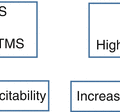© Springer International Publishing AG 2018
Stefano Masiero and Ugo Carraro (eds.)Rehabilitation Medicine for Elderly PatientsPractical Issues in Geriatricshttps://doi.org/10.1007/978-3-319-57406-6_5353. Rehabilitation for Palliative Care and End-of-Life Management
(1)
Community and Geriatric and Palliative Care Unit, Primary Care Division, University Hospital Geneva, Geneva, Switzerland
53.1 Introduction
Diseases with a long end-of-life trajectory such as cancer, cardiovascular disease, or neurodegenerative diseases such as dementia have largely replaced unexpected deaths [1]. Treating these patient’s complex medical, social, psychological, and spiritual needs requires adequate structures and state-of-the-art geriatric palliative care [2]. Palliative care is an approach that improves the quality of life of patients and their families facing the problem associated with life-threatening illness, through the prevention and relief of suffering by means of early identification and impeccable assessment and treatment of pain and other problems, physical, psychosocial, and spiritual [3]. More importantly, palliative care should offer a support system to help patients live as actively as possible until death and enhance quality of life and may also positively influence the course of illness. Therefore, palliative care should be applicable early in the course of illness. Indeed several clinical studies have demonstrated that the introduction of early palliative care programs improve quality of life of patients, particularly with cancer [4].
Deteriorating physical function is a significant problem for people approaching the end of life. Patient’s dependence in self-care increases during the last months or weeks of life, with leisure activities affected just as much as household or activities of daily living [5]. Some particularly older frail patients can have a low physical functioning during the years. The loss of ability to participate in desired daily activities is among the most distressing concerns for patients [6]. It leads to unwanted dependence on others and threatens dignity and autonomy [7]. It can have severe consequences on social interaction and can contribute to depression and anxiety and sometimes a wish to die. That is for even in the context of a life-limiting illness, where deterioration is inevitable, rehabilitation offers a major route to improving patient’s quality of life, no matter how long or how short the timescale. The definition of rehabilitation, “enables people affected by illness or disability to regain function, to live independently, and make decisions for themselves process that aims to maximize physical and emotional well being, enhance social participation, and minimize caregivers’ distress,” perfectly matches the needs of palliative care patients [8]. The interest for rehabilitation in cancer patients has increased in recent years. These principles must also be deployed in the domain of palliative care and end-of-life care, in particular for patients with non-oncological disease [7, 9].
Understanding end-of-life care from a holistic perspective should allow the interprofessional team, including the rehabilitation team, to intervene appropriately in order to improve quality of life in the final days, year, or months of a patient.
53.2 Palliative Care and Rehabilitation
Different studies relate some discrepancy between patient’s existing needs, their adequate assessment, and support provided [10]. Indeed, often health professionals have tendency to assume what factors and issues affect patient’s quality of life. This assumption is then translated in specific interventions based on the health-care professional assumption and not on the needs of the patients. Incongruities between patient’s view and their ability to pursue their activities can result in frustration and sense of meaningless [11]. The role of health professionals working with palliative care or end-of life patients is to improve their quality of life through physical interventions in order to reduce gap between patient’s expectations and hope and actual experiences. They should assist the patient to live as fully as possible within the limitation of the disease [12]. Indeed they should define reasonable goals to support the hopes of the patients as much as possible (e.g., “I would like to go back to my house in the mountain”). Maintaining patients at home as long as possible can also be in some situations a very important goal. Therefore, each health professional should assess the symptoms and the needs of patients, including physical functioning and activities of daily living to identify patient’s functional difficulties in all different settings (hospital, nursing home, or home) and to implement the most adequate support. In addition of the limitation in the functionality, fatigue is a very prevalent symptom as the management is still suboptimal and that there is an urgent need for improvement [13]. The benefits of exercise on fatigue in patients with cancer could maybe also be translated in palliative care and therefore integrated in the care planning of these patients [9, 14, 15].
Stay updated, free articles. Join our Telegram channel

Full access? Get Clinical Tree






